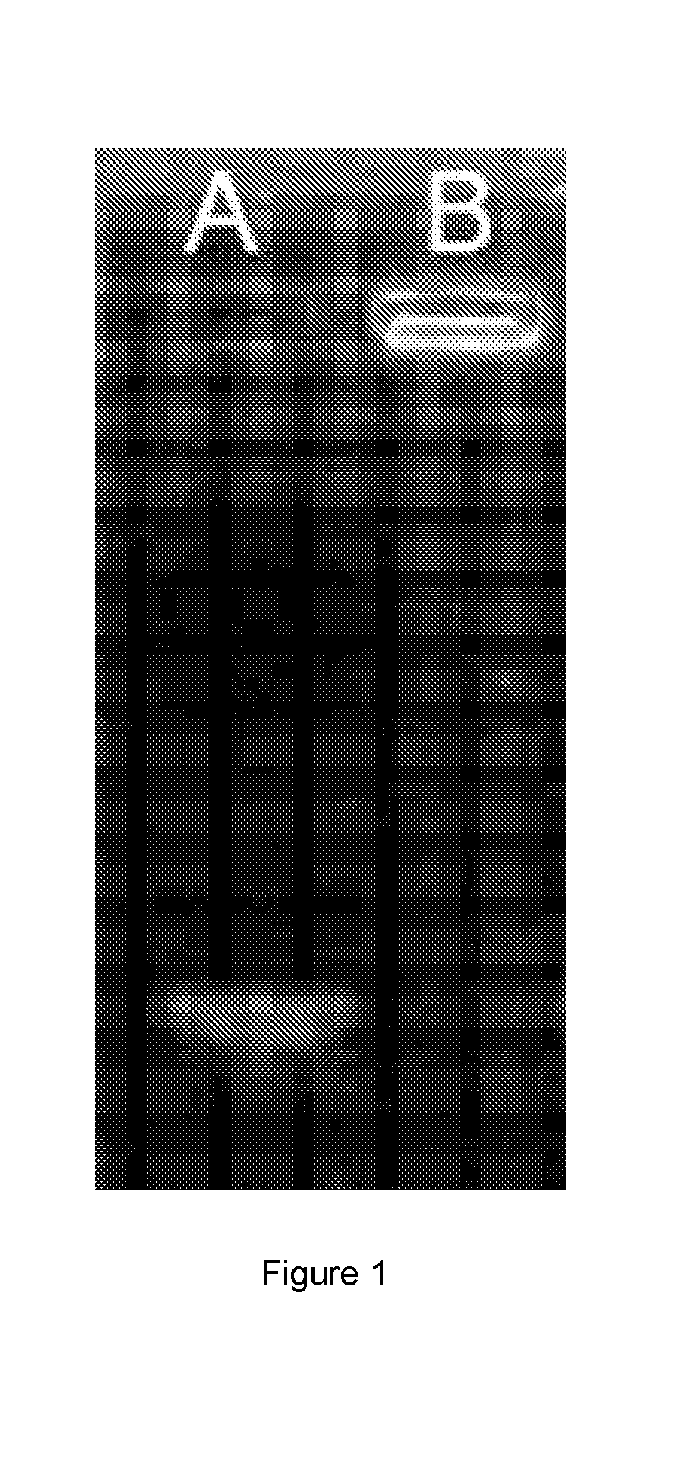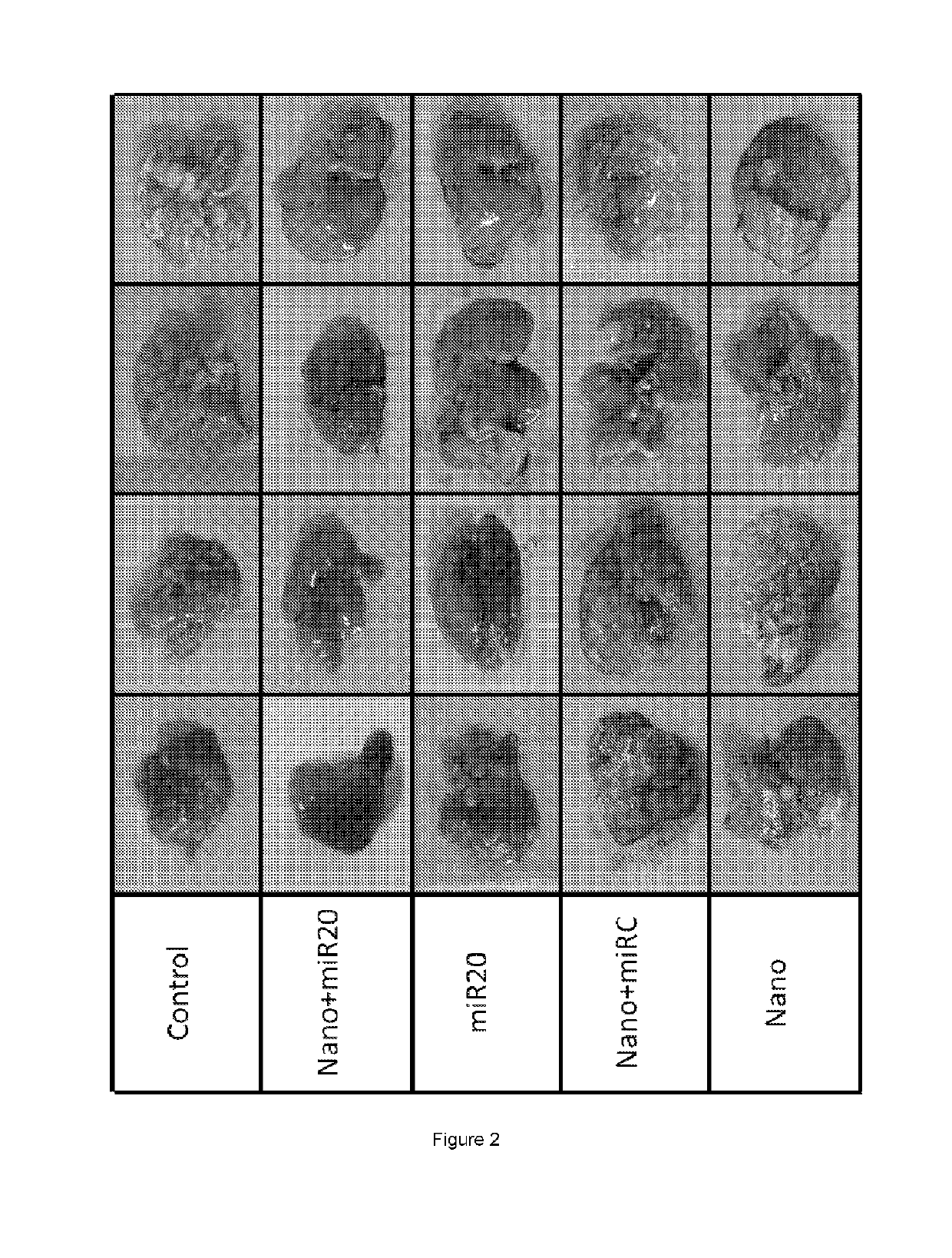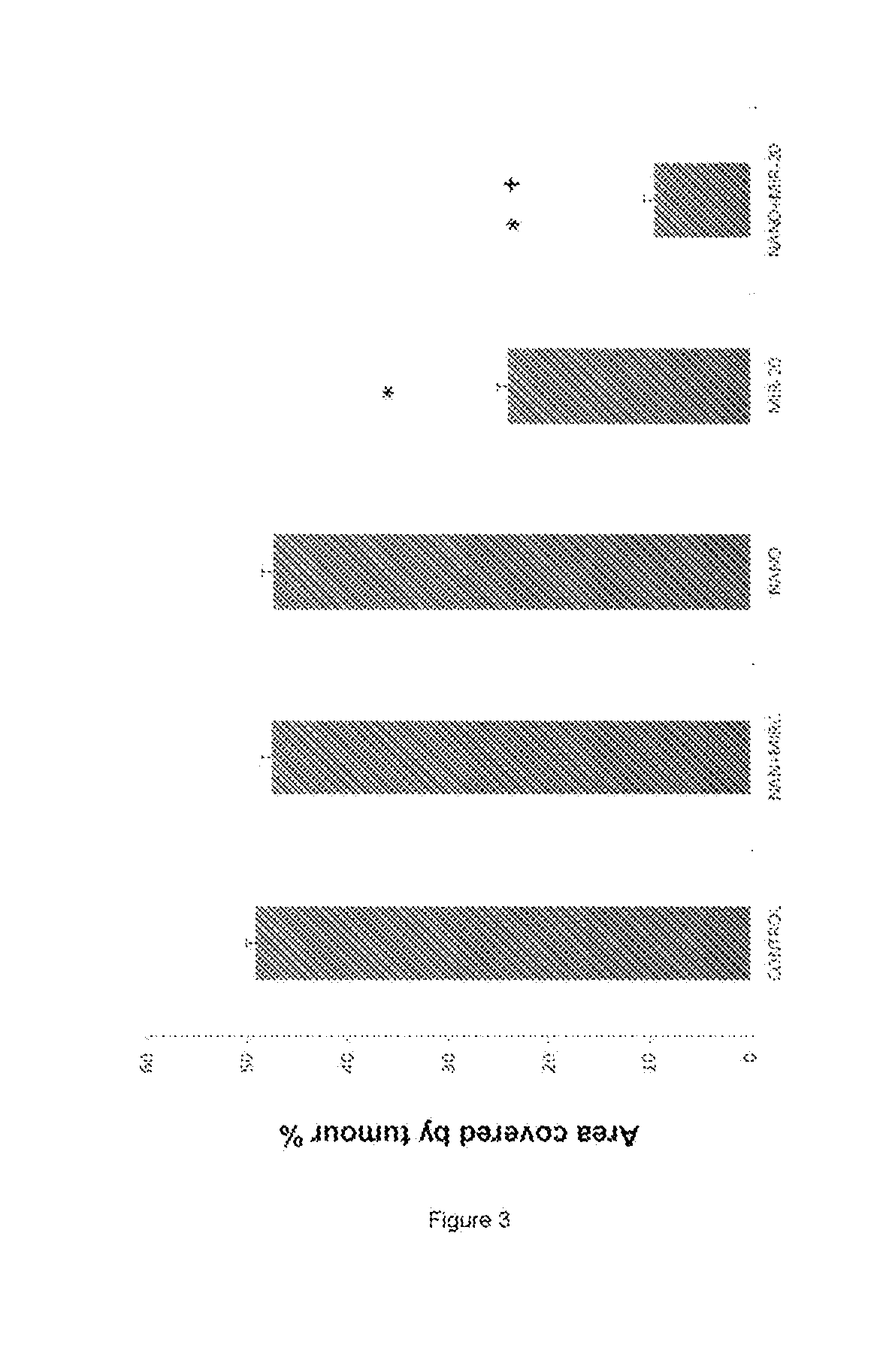NOVEL VEHICLES FOR THE TRANSFECTION OF miRNAS
a mirnas and vehicle technology, applied in the field of new systems comprising mirnas, can solve the problems of short life of mirnas when administered, arousing concern, and difficult efforts, and achieve the effects of improving the stability of mirnas, improving in vivo transport of mirnas, and surprising increase in efficiency
- Summary
- Abstract
- Description
- Claims
- Application Information
AI Technical Summary
Benefits of technology
Problems solved by technology
Method used
Image
Examples
example 1
roof of Concept Study on the Therapeutic Effect in Terms of Clinical Regulation of the Provided Liver Metastases
Preparation and Characterisation of Nanoparticles
[0113]For the preparation of the nanoparticles, a solution of sorbitan monooleate (Span® 80, SP80) and oleylamine (OA) in 3 mL of ethanol (organic phase) was prepared at a concentration of 6.6 and 0.33 mg / mL respectively. Then, this organic phase was added to 6 mL of a stirred aqueous phase containing chondroitin sulphate (CS) at a concentration of 0.125 mg / mL, thereby resulting in the spontaneous formation of NPs. The ethanol was finally removed under reduced pressure in a rotary evaporator. The miRNA was included in the aqueous phase at a concentration of 8.33 μg / mL during the preparation of the nanoparticles. For this purpose, miR-20a was selected. These proportions correspond to percentages by weight based on the total weight of the nanoparticle of 91.67% SP80, 4.63% OA, 3.47% CS, and 0.23% miR-20a.
[0114]The size and zet...
example 2
nd In Vitro Additional Proof of Concept Study on the Therapeutic Effect and the Behaviour of the Nanoparticles of the Disclosure
Colorectal Cancer Cells
[0124]Syngeneic cell lines of c26 murine colorectal cancer (ATCC, Manassas, Va., U.S.A.) were used with Balb / c mice. The cells were cultured under standard conditions in RPMI medium (Sigma-Aldrich, St. Louis, Mo., U.S.A.), supplemented with 10% fetal bovine serum (FBS), penicillin (100 U / mL), streptomycin (100 μg / mL) and amphotericin B (0.25 μg / mL), all purchased from Life Technologies, Carlsbad, Calif., U.S.A.)
Control and Tumour-Activated Cells
[0125]The mice were anesthetised with isoflurane, and a small incision was made in their left side. Then, the cut was inoculated with 50 μl of the C26 cancer cells at a concentration of 2×106 cells / mL. Next, the peritoneum and skin were sutured. The control mice were inoculated with PBS. Fourteen days later, all the mice were sacrificed and the cancer activated cell lines and control lines were...
example 3
Migratory Capacity of LSECs Activated by Tumour Signals is Prevented by miR-20a
[0129]To verify whether miR-20a ablation in LSEC from tumour-colonised livers had any consequence on the physiological behaviour of these cells, they were cultivated in collagen-coated 8-μm pore inserts to measure their migration ability. The tumour-activated LSECs were treated with miR-20a, with miR control or with the unloaded transfection vehicle Myrus®. It was found that the LSEC migration ability increased approximately two-fold when the cells were activated by the tumour, but this was almost reversed to basal levels when the cells were transfected with exogenous miR-20a (p<0.05). Therefore, restoring cellular miR-20a expression in LSECs was sufficient to prevent the increased migratory ability associated with tumour-induced activation (FIG. 6).
PUM
| Property | Measurement | Unit |
|---|---|---|
| size | aaaaa | aaaaa |
| size | aaaaa | aaaaa |
| concentration | aaaaa | aaaaa |
Abstract
Description
Claims
Application Information
 Login to View More
Login to View More - R&D
- Intellectual Property
- Life Sciences
- Materials
- Tech Scout
- Unparalleled Data Quality
- Higher Quality Content
- 60% Fewer Hallucinations
Browse by: Latest US Patents, China's latest patents, Technical Efficacy Thesaurus, Application Domain, Technology Topic, Popular Technical Reports.
© 2025 PatSnap. All rights reserved.Legal|Privacy policy|Modern Slavery Act Transparency Statement|Sitemap|About US| Contact US: help@patsnap.com



